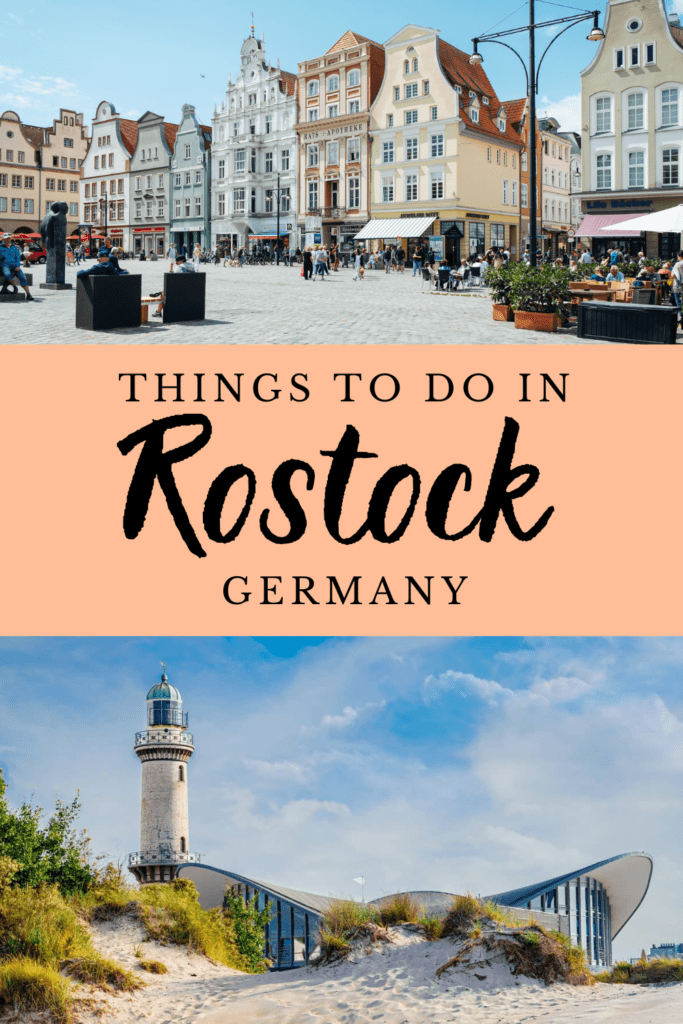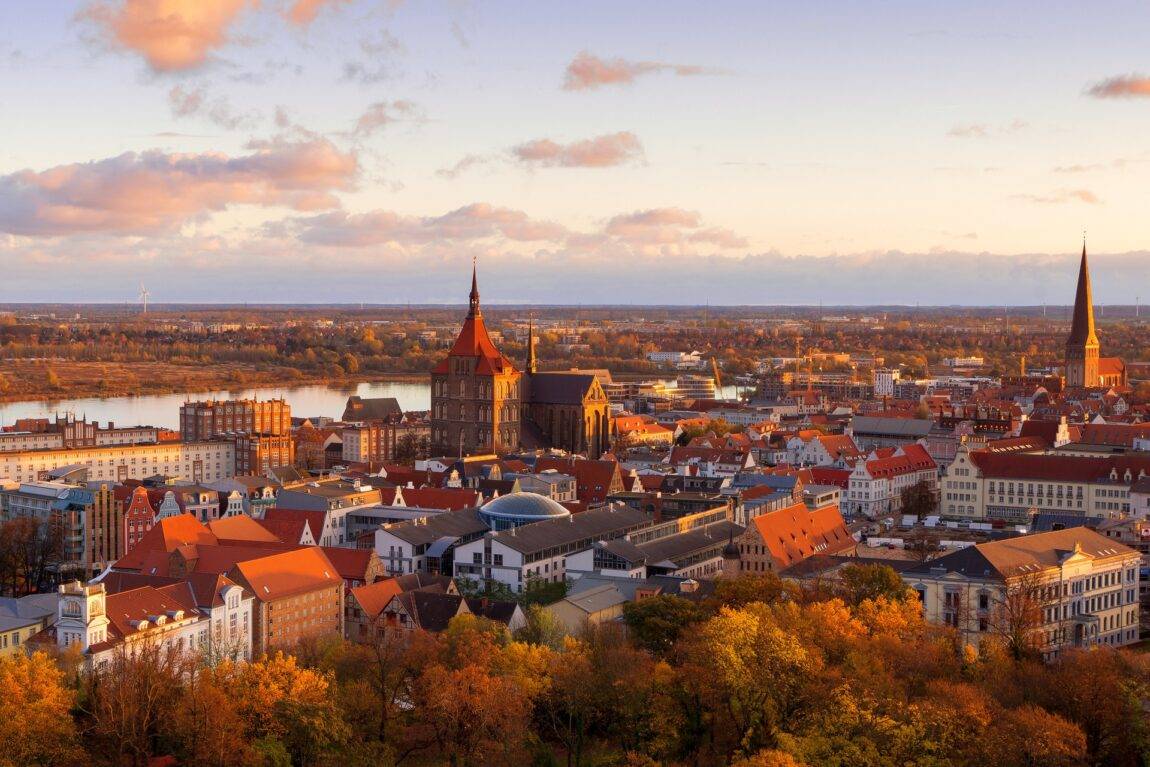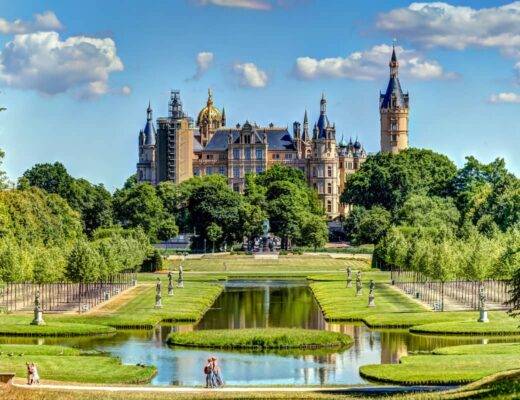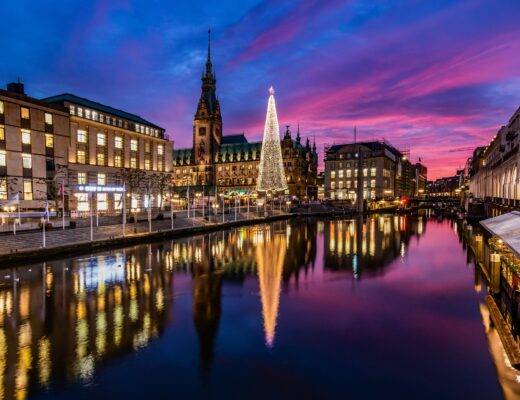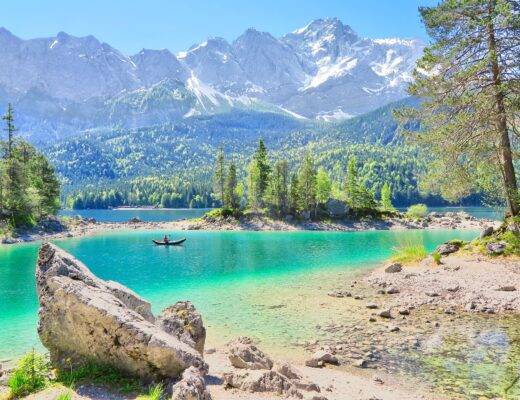Trying to find things to do in Rostock? The vibrant Hanseatic city is both the oldest and largest university and port city in Mecklenburg-Vorpommern, Northern Germany. But despite its size and historic importance, Rostock is one of the lesser-known locations near the Baltic sea for visitors to Germany.
However, this beautiful city is packed with plenty to see and do. In this guide, we’ll take a look at some of the best things to do in Rostock, including a brief history of the city, a visit of the Culture Museum Rostock, the white sandy beach of Warnemunde and more.
Table of Contents
A brief history of Rostock
The first record of Rostock dates back to AD 975, when it was mentioned as a village named Rostocka. The city’s name may be derived from the Slavic word for oak, rost. In the 12th century, Rostock became a member of the Hanseatic League, a trading federation of German cities.
In the 14th century, Rostock was granted Lübeck law by Duke Wartislaw III, making it a free imperial city of the Holy Roman Empire. This allowed the citizens to trade without having to pay taxes or tariffs to the duke.
Rostock soon became one of the largest and most prosperous cities in northern Europe, with a population of over 10,000 by 1400. It was an important port for trade with Scandinavia and Russia, and also had a large shipbuilding industry.
During the Thirty Years’ War (1618-1648), Rostock was occupied by Swedish troops for several years. In 1636, it was besieged by Imperial forces under Wallenstein, but successfully resisted them. In 1756, during the Seven Years’ War (1756-1763), Rostock was again besieged by Swedish troops but this time was forced to surrender after a two-month siege.
In 1815, Rostock became part of the Grand Duchy of Mecklenburg-Schwerin after Napoleon’s defeat in that year’s campaign against Russia. Mecklenburg-Schwerin would remain an independent state until 1918 when it became part of Weimar Republic Germany.
During World War II (1939-1945), Rostock suffered heavy bombing by Allied forces due to its strategic importance as a naval port and shipbuilding centre. After the war, Rostock was within East Germany and experienced considerable economic growth during that country’s period of communist rule (1949-1989). Since German reunification in 1990, Rostock has continued to prosper as an important economic centre in northeastern Germany.
Learn something new at Culture Museum Rostock
Rostock’s Culture Museum is one of the city’s most popular tourist attractions and is absolutely worth a visit.
The museum houses a collection of artifacts and artworks from Rostock’s rich history, including the city’s famous maritime heritage and lives of its wealthy merchants. Its varied selection of permanent and temporary exhibits cover everything from work from the Nazi “Degenerate Art” campaign to historic coins and toys.
Rostock’s Cultural History Museum is located in the heart of the historic district, within walking distance of many of the city’s other popular tourist attractions.
The building itself is something to look at, as it’s housed inside the Abbey of the Holy Cross, one of the best preserved abbeys in Mecklenburg-Western Pomerania. It’s a good place to spend a couple of hours, and is a great option to have in your back pocket should you run into bad weather during your trip.
The museum is open Tuesday through Sunday from 10am to 6pm. Best of all, entry is absolutely free!
Explore your surroundings with a Rostock walking tour
With such a rich history to discover, a walking tour is a great way to learn more about Rostock and make sure you don’t miss anything. I recommend this 2-hour tour, where you’ll get a great overview of its main attractions. Along with an expert guide, you’ll explore the old town and the historic harbor area on a tour that spans from the medieval architecture to the 20th-century .
Learn more about the major city sites, like the town hall, gothic churches, and the medieval city wall, and stroll through old-town alleys, riverside boulevards, and the university square.
For me, 2 hours is the sweet spot for a walking tour, packing in lots of information while not dragging on too long that you start to get achey feet. And for the small fee of just 10 EUR per person, it’s a good experience for any visitor to the city. This particular activity is a group tour, although a private tour is also available on request. Book your spot in just a few clicks below!
Get up close and personal with animals at Rostock Zoo
Rostock Zoo is a must-see for animal lovers of all ages, and is easily one of the best zoos I’ve ever been to. The zoo is home to over 4,500 animals in 450 different species from all over the world., including lions, tigers, giraffes, orangutans and penguins.
However for me, the stars of the show are the polar bears, situated in the Polarium. With an enclosure comprising of both land and water ( 3,600 square metres with more than 400 square metres of water area) visitors can see these amazing creatures play feed and swim, even underwater!
In late 2021, two polar bear cubs were born at Rostock Zoo, adding two more members to this endangered species. The cubs join a global population of less than 300 polar bears living in zoos around the world and about 23,000 living in the wild, so getting to see them up close is a truly special experience.
Rostock Zoo is open every day from 9am to 6pm and admission is €15 for adults, €12 for students and €9 for children under 12.
Note that the zoo is not located in Rostock’s city centre, however it’s easily reached by tram or bus. Take tram 3 or 6 to Trotzenburg from April to October, or bus number 28 to Barnstorfer Ring.
Eat like a sailor at Zur Kogge restaurant
Zur Kogge is a must-visit restaurant for anyone looking for a truly unique dining experience. The restaurant is located in an old shipyard warehouse and has been converted into a beautiful, modern space. The menu features a mix of traditional German and international dishes, all of which are made with fresh, ingredients that reflect Rostock’s maritime ties.
The setting of Zur Kogge is what makes it so special, as you can enjoy your meal surrounded by the history of Rostock’s shipbuilding industry. The exceptionally good service and delicious food make it all the more memorable. If you want to try some traditional northern German cuisine, I’d highly recommend the ‘grüne Ostseeheringe‘ or ‘green Baltic herring‘.
Here, the fish are coated in flour, fried and served straight from the pan (and are, in my opinion, a lot more palatable than the pickled variety). Served up with pan-friend potatoes and green beans with a generous helping of crispy bacon lardons, this is a meal fit for any sea-farer!
For a more modern offering, the fish ragout with horseradish sauce and rice or the cod fillets with creamy spinach are both excellent choices. Whatever you decide to order, it’s sure to be delicious.
Zur Kogge is open Tuesday through Sunday from 12pm to 3pm and again from 6pm to 10pm. Reservations are recommended.
Get in the holiday mood in Warnemünde
Warnemunde is a beautiful seaside town located just on the outskirts of Rostock. The town is home to a lovely sandy beach, as well as historical landmarks like the Lighthouse, which was built in 1856, and the Maritime museum.
Visitors can also enjoy the many restaurants and cafes lining the streets, or order a fried fish sandwich straight from a boat along the Alte Strom (old canal).
On a sunny day you’ll likely find that Warnemünde beach is absolutely packed, as it’s hugely popular with German holidaymakers. However, even if you visit during colder months, a stroll along the white sands and down to the iconic 70s-built Neptune Hotel is a great way to while away the afternoon.
The town itself is very cute, with plenty of picturesque houses and historic buildings to admire and cobbled streets to explore. Just a short half-hour train journey from the city centre of Rostock, it makes for a great day trip, offering completely different vibe from the city while keeping that maritime charm.
If you like, you can even extend your time in Warnemünde with an exciting 3-hour sunset cruise on a chartered sailing boat. All you need to do to get across the river to the marina is take the public ferry next to train station. It’s very regular and costs only €1.70 each way.
For information on this lovely little town, check out my post: Warnemunde: Coastal Germany’s Best-Kept Secret
Get something to take home from Rostock’s many shops
If you enjoy a spot of shopping, Rostock has a great selection, from big names and buzzing malls to small, independent boutiques.
One of my shopping highlights was Wupatki, perhaps the most well-stocked toy and game shop I’ve ever been to. Set across two floors, this place has every board game you can imagine, and fellow game nerds will find themselves well at home. Not just for kids, there really is something for everyone here, and the staff are also very knowledgeable while not being too obtrusive.
Stroll down Kropeliner Strasse (Kröpi to the locals), and you’ll have your pick of stores. Even if you don’t want to spend any money, this is the main street of Rostock and is where all the action happens. Lined with beautiful buildings, it leads down to the gorgeous main building of the University of Rostock. In front of the University Green you’ll also the ‘fountain of the joy of life’. However, young locals call it the ‘Porn Fountain‘, take a look and you’ll see why…
For something a little different, head over to Barnstorfer Weg, the alternative main street for the city’s many students. Check out Freiraum or cosi for unique gifts and souvenirs, Gusti Leder for leather bags and purses or Haltestelle for clothes. To rest your feet and get a cup of coffee, Café Käthe Lom and El Waleed are perfect spots to stop.
Where to stay in Rostock
While I normally try to steer clear of chain hotels, when planning my visit I found a good deal for a weekend at Pentahotel. In an ideal location just off Kröpeliner Straße, it’s close to everything you need while not being affected by any noisy nightlife.
The rooms are modern and beautifully designed with really comfy beds, and there is a fantastic hotel bar with a free pool table should you find yourself at a loose end in the evening. I also really appreciated the generous check-out time of midday, giving you a bit more time to enjoy your trip.
As I visited during COVID restrictions I didn’t get a chance to enjoy any food from the lounge, but the breakfast buffet was very well-stocked with hot and cold options and just the thing to set you up for a day of exploring Rostock. Given how enjoyable the experience was, I would definitely stay there again!
Book your stay at Pentahotel here.
Is Rostock worth visiting?
The city of Rostock is definitely not the most well-known (or well-perceived) destination in the North of Germany. However, it’s a great place to visit got lots to offer all kinds of holiday makers. Whether you want to be transported back to medieval times and immerse yourself in Hanseatic history, enjoy all the shops and cafes the city has to offer or even while away your holiday on sandy beaches, there really is something for everyone in Rostock.
Is it the most beautiful place in Germany? Perhaps not. But there is plenty of beauty to be found if you take the time to look around the city walls. So if you’re interested in exploring more of Northern Germany or have been offered a day trip from one of the many cruise lines that cover the Baltic coast, why not spend some time in Rostock? You’ll find plenty of fun things to do and will get a unique perspective on a varied and vibrant German city.
Things to do in Rostock: Pin it!
